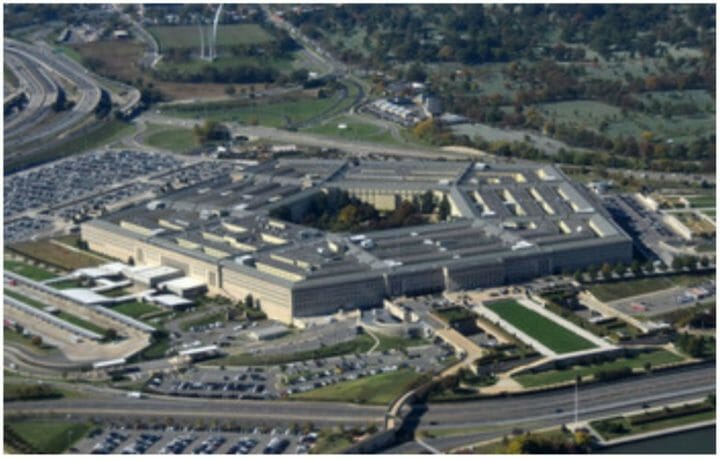There are a number of companies known only for their consumer products whose contribution to the defense industry are or will soon be explosive in terms of impact. In this series, ClearanceJobs will examine some of these companies and explore how they came to places of prominence in the national security industry.
I, Robot, the science fiction collection written by Isaac Asimov and published in 1950, is best known for the short story “Runaround,” which introduced the “three laws of robotics.” They are:
- A robot may not injure a human being or, through inaction, allow a human being to come to harm.
- A robot must obey the orders given to it by human beings, except where such orders would conflict with the First Law.
- A robot must protect its own existence as long as such protection does not conflict with the First or Second Law.
While more like safety guidelines than laws per se, their purpose is to prevent presumably expensive robots from needlessly damaging themselves, and to protect humanity from a Terminator-like future. (Let’s face it: while a world with terms like “hyperalloy combat chassis” and “mimetic polyalloy” would be pretty great, the post-apocalyptic mountains of skulls might get depressing.) And though novelists, philosophers, and computer scientists have found loopholes in the laws over the years (see: Battlestar Galactica, for example, where the paramount question is, what happens if a robot thinks it’s a human?), the idea of such laws isn’t a bad one, especially as the field of robotics leaps forward, and robots become part of our everyday lives.
From Roomba to Death Robot
With regard to the proliferation of robots, many of us have been patiently waiting for some variation of Paulie’s Robot or Marvin the Android when really we should have been looking down, where the robots really are. Consider the Roomba—that semi-autonomous robot disc that dutifully cleans our carpet at all hours of the day. Roomba’s manufacturer, the appropriately named iRobot, has brought the first real taste of a Jetson’s future into our homes. What you might not know is that when iRobot isn’t building robot vacuum cleaners, the unexpected defense contractor is building death robots for the Department of Defense.
Earlier this year, iRobot’s stock rose on news that it had scored a contract with the U.S. military worth just shy of $60 million. This is the latest of many such contracts for the company to provide the Defense Department with Man Transportable Robotic System (MTRS) units, which are used for disarming improvised explosive devices. Perhaps the company’s most famous MTRS is the PackBot. Thousands of such robots have been deployed to Iraq and Afghanistan. In addition to IED disarmament duty, the robots are designed to accept hardware modules that allow them to do everything from detect snipers to sniff out bombs. Such flexibility of purpose suggests a radically transformed battlefield of the future on land, sea, and air. (Concerning sea and air, iRobot’s very first experimental robot, called Genghis, is designed for exploring other planets; its second robot, called Ariel, is amphibious and designed to find underwater mines.)
Sweeping battlefields and your floors
Though it poses an R&D challenge like no other, combat is an excellent place to push the limits of engineering and reliability. Because of the oftentimes scarce parts and lack of readily available technical support, developers are forced to simplify the designs of robots while increasing durability and flexibility. Paktika Province, for example, is not the place where you want your hardware to give up the ghost. The engineering marvels that result from such harsh conditions then proliferate to other places, to include disaster areas, crime scenes, and eventually, our living rooms. As Colin Angle, co-founder of iRobot, explained to CNN of the Roomba’s underlying software, “We were also building robots for the Pentagon to clear minefields. Using that intelligence technology actually gave us the algorithms which Roomba uses to make sure [your home] is thoroughly vacuumed.”
Just as the space program revolutionized such fields as artificial limbs and firefighter gear, and World War II gave us atomic energy and the electrical computer, battlefield robotics are returning to the home front, repurposed but no less useful. And such robots aren’t exclusive to a daring selection of early adopters. The servicemen and servicewomen who have used iRobot’s technology come from every walk of life in every corner of the country. Society as a whole would seem to be nicely prepared to accept robots in the home. War alongside robots has prepared the nation for peace alongside robots.
Your Household Robot is a Combat Veteran
Considering the rate of expansion for unexpected defense contractors, iRobot and Google might one day be as critical to battlefield superiority as Boeing and General Dynamics. In the meantime, perhaps cats and dogs the world over are rightfully terrified of our eerily active Roomba vacuum cleaners. Beneath the robots’ plastic shells are the metallic souls of battle-hardened veterans. Let’s hope they remember the three laws.



